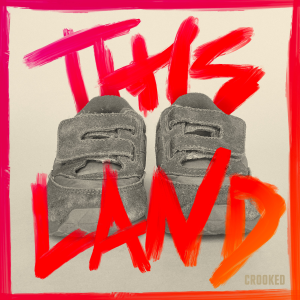
«Kill the Indian in him, and save the man.» A philosophy made famous by Richard H. Pratt, the founder and superintendent of the Carlisle Indian Industrial School, and, arguably, the mantra that motivated 150 years of U.S./Native American relations.
Throughout the 19th and 20th century, hundred of thousands of Native children were removed from their families and communities and made to attend boarding schools; typically, these were run by the federal government or Christian groups. The boarding schools demonstrated a rethinking of how the U.S. engaged with Native Americans. By the late 1800’s, much of the land that currently makes up the United States was inhabited by non-Native communities, but more land was in demand. In lieu of overt military aggression, the U.S. decided a new tactic to gain access to the land owned by Native communities, assimilation. This adoption might most succinctly be explained in a quote from the 1885 Commissioner of Indian Affairs, Hiram Price, who stated «it is cheaper to give them education than to fight them.» At these schools, native children were abused, punished for speaking their language, and actively denied the ability to practice their families’ culture. It was typical for Native American children to be forced to work without pay, and to cut their hair and wear uniforms aligned with the modern white culture of the time.
The abuse at the schools was significant, with many who have studied Native American boarding schools estimating that tens of thousands of children dying from disease, abuse and neglect. Often, native children who died at one of these schools were buried in unmarked or mass graves, their fate never shared with their families or community. After decades of Native Americans urging the U.S. and Canadian government, whom participated in nearly identical practices, to address the long-lasting impacts of the boarding school era, in 2021 things began to change.
At a residential boarding school in Canada, almost one thousand unmarked graves of native children were found, leading to swell of outcry from both native communities and others. The same month of the discovery, the U.S. Department of Interior announced that it will be taking on a comprehensive review of the legacy and impacts of the federal boarding school policies. In June, 2021, Secretary Deb Haaland, who is the first Native American to serve as a cabinet secretary in U.S. history, announced that «The Interior Department will address the inter-generational impact of Indian boarding schools to shed light on the unspoken traumas of the past, no matter how hard it will be.» In addition to the Department of Interior’s Initiative report, which is scheduled to be published in April of 2022, others at the federal level have taken steps to address the legacy of boarding schools. On September 30, 2021, recognized by groups, activists and community members as National Day of Remembrance for Indian Boarding Schools, a number of U.S. Senators introduced a bipartisan bill to establish a commission to investigate Indian Boarding School policies and practices, protect unmarked graves, support repatriation, and stop modern-day assimilation practices. Additionally, a separate U.S. Senator introduced a formal resolution to officially designate September 30, 2021, as a National Day of Remembrance for U.S. Indian Boarding Schools.
This week’s Current Events resources examine the history and legacy of Native American boarding schools. The resources shared provide historical content and modern day context around the survivors and those impacted by the federal boarding school policy.
Looking for more current events resources? Sign up at our We the Teachers Educator Resource Community page, where you can find all of our Current Events, and learn about our other programs!
Essential Questions, Vocabulary & Extend the Resources:
- What were Native American boarding schools?
- What were the primary objectives of Native American boarding schools?
- What were and are the short and long term effects of these board schools on their attendees?
- What might have been the impact of the boarding schools on Native American culture?
- Why might have Native American boarding schools have been so prevalent for so long? (150 years)
- In your opinion, how should the United States deal with the legacy of boarding school policies and their effects?
- In your opinion, should federal and local governments strive to do more than what is being proposed in the Federal Indian Boarding School Initiative? If so, what actions should they take?
Click here for a hardcopy of the Essential Questions & Native American Boarding School Vocabulary
Click here for a hardcopy of the Extend the Resources handout with suggested lesson activities and extensions
Videos:
Podcasts:
Indian Boarding Schools’ Traumatic Legacy, and the Fight to get Native Ancestors Back, Weekend Edition Saturday, NPR, August 28, 2021
Grappling With the History of Native American Boarding Schools in California and Beyond, KQED’s Forum
American Indian Boarding Schools, Hashtag History, September 15, 2020
Solomon’s Sword, This Land, August 23, 2021
Background Resources:
- Healing Historical Trauma, Hopkins Bloomberg Public Health
- A century of trauma at U.S. boarding schools for Native American children, National Geographic
- Indigenous History of Oregon, Pacific University
- The National Native American Boarding School Healing Coalition
- Struggling with Cultural Repression, National Museum of the American Indian, Smithsonian
- Assimilation Through Education: Indian Boarding Schools in the Pacific Northwest, Carolyn J. Marr, University of Washington
Recent Articles:
- Interior Department report identifies more Native American boarding schools and burial sites, PBS News Hour, May 11, 2022
- Federal leaders face Indigenous schools’ tragic past for first-of-its-kind report, OPB, April 5, 2022
- Mysterious death of a chief’s daughter in Oregon illustrates challenges of Native boarding school reckoning, OPB, April 4, 2022
- Report on federal Indian boarding schools due April 1, Indian Country Today, March 31, 2022
- Indigenous families seek justice for boarding school abuse as graves of children uncovered, ABC News, March 31, 2022
- Painful but not ancient history: Michigan could commission study of Native American boarding schools, WKAR, Public Media from Michigan State University, February 28, 2022
- A History Not Yet Laid to Rest, The Atlantic, November 24, 2021
- Lost Lives, Lost Culture: The Forgotten History of Indigenous Boarding Schools, The New York Times, November 17, 2021
Recent Editorials:
- ‘Truth and Healing Commission’ could help Native American communities traumatized by government-run boarding schools that tried to destroy Indian culture, The Conversation, October 8, 2021
- Value Us: Stop Viewing Indigenous People as Disposable and Invisible | Opinion, Newsweek, April 20, 2022
- For thousands of Indigenous children, Native American boarding schools erased their culture or worse | Opinion, Tennessean, October 14, 2021
- Opinion: Reparations now for the atrocities at Indian boarding schools, The Denver Post, September 2, 2021
Lesson Plans:
- Native American Boarding Schools, Library of Congress
- Native American boarding schools and human rights, PBS NewsHour Classroom
- Lesson Plans (various), Carlisle Indian School Digital Resource Center, Dickinson College
- Carlisle Indian Industrial School, Stanford History Education Group
- Each School Had a Graveyard: Native American Boarding Schools, Civil Rights Teaching
Lesson Plans for Younger Students:
- Cultural Assimilation and Indian Boarding Schools, Oregon Department of Education
- Addressing Historical Trauma: The Indian Boarding School Era, Native American Education For All Resources, IllumiNative, National Indian Education Association
- Canada’s forced schooling for indigenous called «cultural genocide», Newsela
- Students Fight Back, ActivlyLearn
Media & News Literacy Lesson Plans:
Media Literacy Resources – Newseum
Resource Library – News Literacy Project
News & Media Literacy Lessons – Common Sense
Media Misinformation, Viral Deception, and «Fake News» – University of Wyoming
Evaluating Sources in a ‘Post-Truth’ World: Ideas for Teaching and Learning About Fake News – New York Times Lessons




